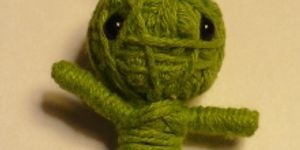Technology
The Promise of Cheaper Biofuels from
APR 21, 2014 12:00 AM PDT
Share
Computers in cockroaches? Is that a good idea?
 A group of researchers has successfully injected various types of DNA origami nanobots in living cockroaches (Blaberus discoidalis) to control a molecule that targets their cells. The study, which was published recently in Nature Nanotechnology, demonstrates that DNA origami can be used to successfully fabricate nanoscale robots that can interact dynamically with each other in a living animal-in this case cockroaches.
A group of researchers has successfully injected various types of DNA origami nanobots in living cockroaches (Blaberus discoidalis) to control a molecule that targets their cells. The study, which was published recently in Nature Nanotechnology, demonstrates that DNA origami can be used to successfully fabricate nanoscale robots that can interact dynamically with each other in a living animal-in this case cockroaches. We knew cockroaches were good for something, didn't we?
Believed to have originated 280 million years ago in the Carboniferous era, cockroaches are some of the most adaptable organisms on earth. It turns out that they are also well suited for advancing nanotechnology by carrying nanocomputers made from DNA, the molecule that has stored the genetic information for all life on earth for billions of years.
DNA origami: A natural substrate for nanocomputing
There is something about DNA that is intrinsically appealing to nanoscientists. It is a natural nanoscale material that is able to self-assemble into intricate nanostructures and nanomachines and can be designed to perform the same kind of logic operations as a silicon-based computer. This has become as DNA origami, which refers to the fact that DNA can be programmed to fold and unfold much like a single sheet of paper is used in the Japanese art of origami.
"This is the first time that biological therapy has been able to match how a computer processor works," says co-author Ido Bachelet of the Institute of Nanotechnology and Advanced Materials at Bar Ilan University.
In the case of this study, interactions between the nanobots generated logical outputs, which were then relayed to switch molecular payloads on or off. The nanobots were labeled with fluorescent markers, so the researchers could follow them as they travelled around the insect's bodies and analyze how different robot combinations affected where the substances were delivered.
Does this sound familiar? Biological systems are collections of molecular objects that interact with each other, and within these systems, cells carry out intricate molecular processes controlling these interactions. At this stage, DNA nanobots cannot perform chemistry with the same level of precision as living cells, but this study does point to some very interesting possibilities.
In a recent issue of New Scientist, Daniel Levner, a bioengineer at the Wyss Institute at Harvard University and a co-author of the study, was quoted as saying: "DNA nanorobots could potentially carry out complex programs that could one day be used to diagnose or treat diseases with unprecedented sophistication."
Perhaps the day will come with DNAbots could be designed to eliminate cockroach infestations.
You May Also Like
Loading Comments...








